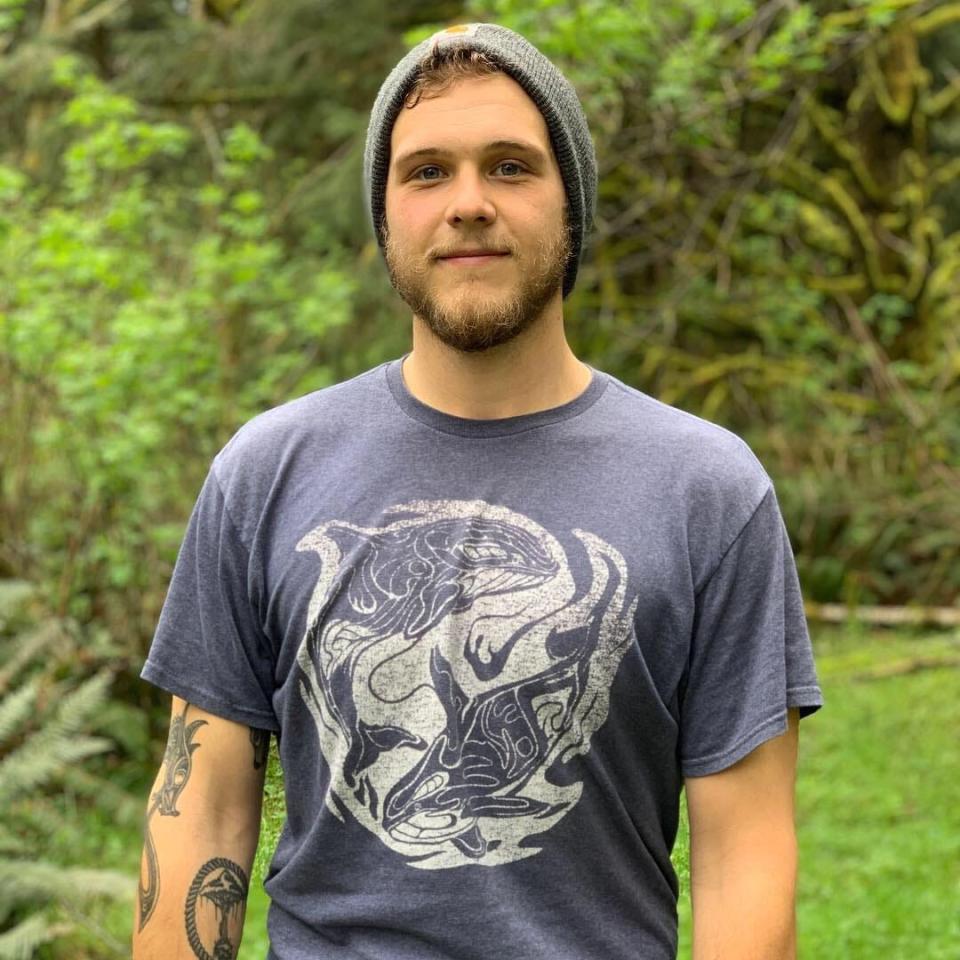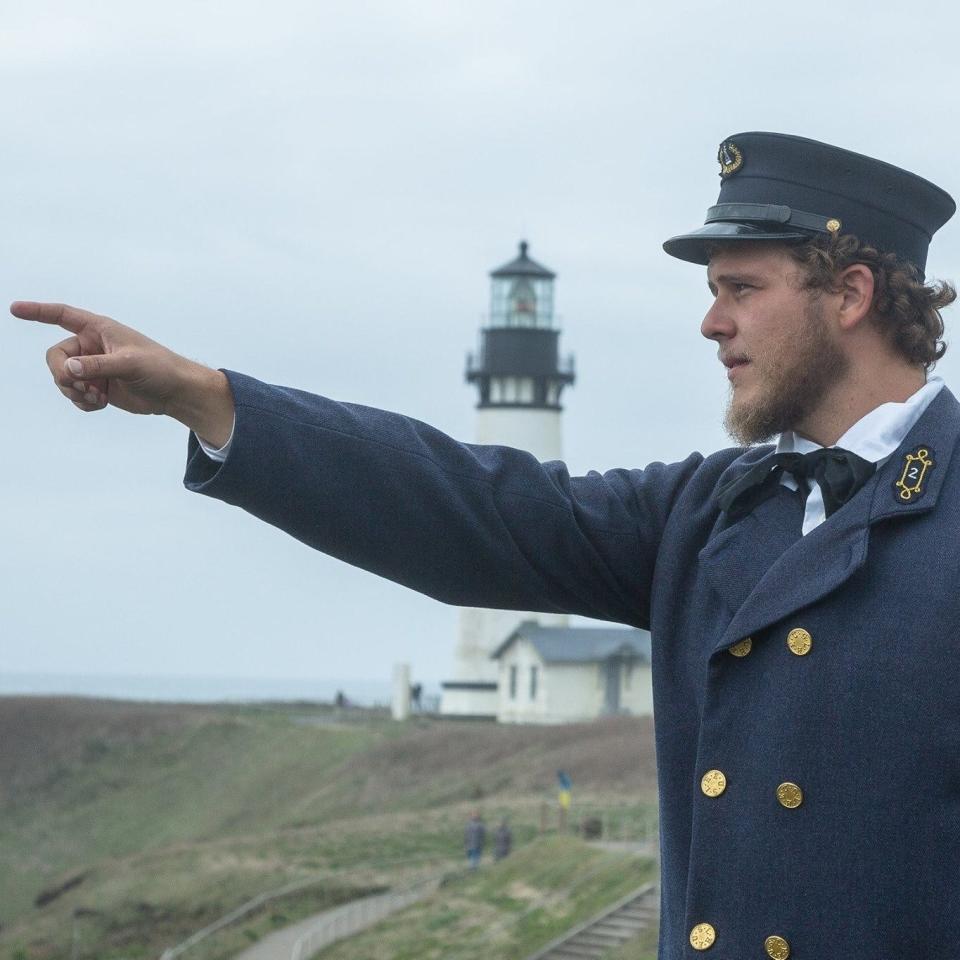History of the Opera House: Jaykob Wood, connecting through history
Jaykob Wood has clear memories of growing up in Cheboygan at the Opera House.
“As a kid, I didn’t feel like I fit in until I began acting at the Opera House. I remember in sixth grade, my mother gave me the ultimatum that “she didn’t care what I did over the summer, but I wouldn’t spend it inside, at home.” When my grandmother suggested I audition for Northland Players summer theater camp, I balked, but in the end, I decided it was better than any sport (I never was much of an athlete).

I auditioned and got the part of a clumsy henchman in an original musical by George Krawczyk, “Robin and the Hoover Hollow Hood.” I was hooked after that and auditioned for every summer theatre camp and Missoula Children’s Theatre show from 2005-09.
My most memorable show from that time was “The Escape of Bubbles Malone” in which I played a mobster whose gang shot bubble gum instead of bullets. I’ve never seen so much silly string on stage. Leo Cocciarelli was not so pleased with the “bubble gum” being sprayed on the stage he worked so hard to keep clean.
When I got to high school, a whole new world opened up to me through Cheboygan High School musicals. At first, all the musicals I was in were at the high school auditorium but by 2009, the high school musicals venue was the Opera House again. I’ll never forget my role as Conrad Birdie, dancing and crooning a-la-Elvis, pompadour and all.

I attended Interlochen Arts Academy in 2009-10 for percussion and vocal music. I think my years of musicals at the Opera House prepared me for the rigor of practice and rehearsal. I don’t know if I would have been as successful without that experience.
I returned to graduate from CHS in 2010/2011 and learned that we would be doing "The Wizard of Oz" that year. I was excited to work with Midge Shaw again — I had seen her passion bring previous plays to life. I think I auditioned for the Scarecrow, originally, but was placed as the Cowardly Lion. Looking back at casting for this play, I don’t think Midge could have done it any better. Every actor was perfect for their role, and we slowly embodied our characters as the academic year crept by. "The Wizard of Oz" was the biggest production I’d ever been a part of, and I think the biggest production ever taken on by CHS.
Despite the challenges of suspending actors in the air, a live dog on stage, and the regular trials of producing a show, it came together and gained the reputation as one of Cheboygan’s most memorable plays ever produced. Looking back, I am grateful for my time on stage. It has made me a better public speaker and has fostered a lifelong appreciation for the arts.”
Wood graduated from University of Michigan in 2015 with a B.A. in Anthropology, History and Museum Studies. He worked as a field archaeologist, park ranger, and living history interpreter.
Living history interpreters are more than re-enactors. They not only tell what happened in history, they demonstrate the context of life in the past to pull visitors into a deeper meaning of history. Interpreters translate the past for modern audiences. Wood said, “Living history interpretation is costumed, first- or third-person interpretation of cultural heritage (think colonial Michilimackinac, or historic Mackinaw island). Living history interpreters usually are "actors" in a sense, connecting visitors to a time, place, or person by "playing" that person.”

Helping people connect to their past, to appreciate their heritage and culture, is a lifelong goal for Wood. “My drive comes from the passion for connecting people to cultural heritage, especially under-represented history,” Wood said. “It is important to me to bring light to things that don't get talked about. Women, minority populations, LGBTQIA+ folks, and traditionally disenfranchised people rarely get to see themselves represented. I think it is important to create space to highlight those perspectives when talking about history.”
As the current executive director of the Tillamook County Pioneer Museum in Tillamook, Oregon, Wood broke new ground in connecting people to their cultural heritage by telling the stories of those who were often ignored. He redefined the term “pioneer,” brought in his love of the arts and created an exhibit about a little-known artist named Lucia Wiley.
“Traditionally, we had exhibited pioneer-themed exhibits, but I wanted to focus on another type of "pioneer;" a depression-era muralist named Lucia Wiley. Despite being an amazing artist, she had never been represented at the museum so I curated an exhibit of her art for display. It is now a traveling exhibit on loan to the city of Tillamook,” Wood said.
More: Kaitlyn Bailey: Kaitlyn Bailey a boomerang in the best kind of way
More: History of the Opera House: Victoria Overton Hurd and the Wings of Gold
More: History of the Opera House: Flying Monkeys push boundaries, imagination
Wood makes a brave leap in September 2022. He will attend University College Dublin (UCD). The Irish university is ranked within the top 1 percent of higher education institutions worldwide.
Wood will enter the Master’s Programme in World Heritage Management and Conservation. The program focuses on the preservation of cultural and natural heritage resources, including World Heritage sites. World Heritage sites designated by the United Nations Educational, Scientific and Cultural Organization (UNESCO) include the Grand Canyon, the Great Wall of China, the Taj Mahal and The Alamo.
“I have always been interested in culture, anthropology, and history. Now I will get to live out my dream. Wherever life brings me, the skills gained, and the memories made at the Cheboygan Opera House will follow,” Wood said.
— Kathy King Johnson is former executive director of the Cheboygan Opera House.
This article originally appeared on Cheboygan Daily Tribune: History of the Opera House: Jaykob Wood, connecting through history

